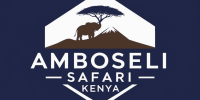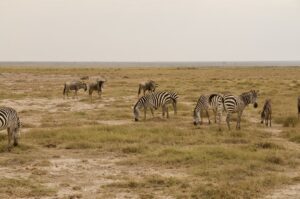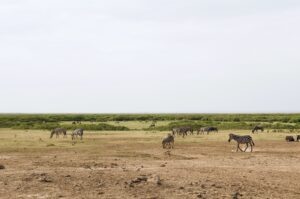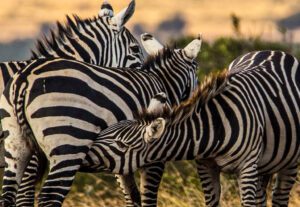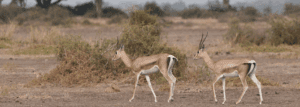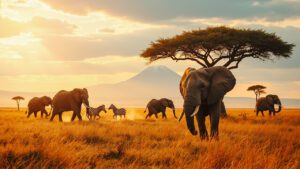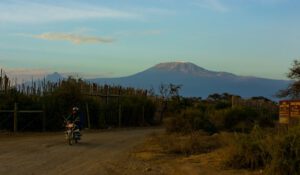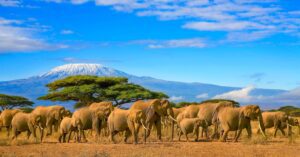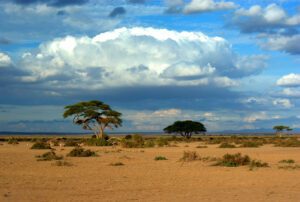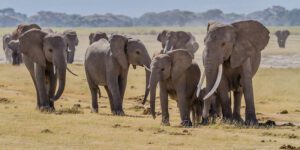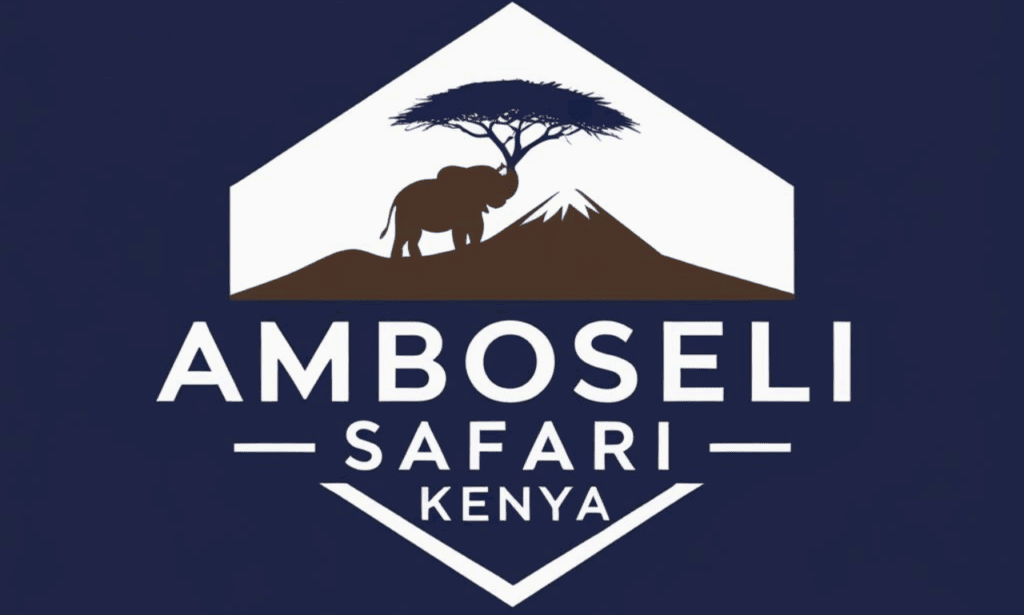What trails or routes are available for hiking in Amboseli?
Amboseli isn’t primarily a hiking destination, as the focus is generally on wildlife safaris conducted in vehicles due to the presence of dangerous animals like lions, elephants, and buffalo. However, for those interested in getting out on foot, there are light walking safari experiences available, mostly conducted in safe zones of the park or in the surrounding community conservancies. These walks are typically guided by experienced park rangers or local Maasai guides to ensure safety, making it a unique safari experience.
One of the most popular activities related to hiking around Amboseli involves guided cultural and nature walks in the Maasai community areas adjacent to the park. These walks allow visitors to explore the stunning savanna landscapes, learn about the rich biodiversity, and interact with the Maasai people. For example, you could go on a walking tour to learn about medicinal plants that the Maasai use or stroll to scenic viewpoints with incredible vistas of Mount Kilimanjaro, enhancing your African safari adventure.
Another route visitors consider is climbing Observation Hill, one of the few designated areas where visitors are allowed to walk. Observation Hill is a short hike, but it rewards visitors with panoramic views of Amboseli’s open plains, swamps, and distant views of Kilimanjaro. This is often a favorite spot for photography and relaxing, particularly for those eager to capture the breathtaking wilderness.
It’s essential to note that unaided or unguided hiking deep into the park isn’t safe because of the abundant wildlife, which includes predators and large herbivores that could be dangerous if startled or approached. For more extensive hiking experiences, visitors are often encouraged to explore Kenya’s other parks or reserves better suited for trekking, as these can offer a complete safari experience.
Overall, while Amboseli might not be a traditional hiking hot spot, options like guided nature walks and Observation Hill make it possible to stretch your legs and enjoy the incredible surroundings, adding to the allure of this renowned wildlife conservation area.
What is Amboseli, and where is it located?
Amboseli is one of Kenya’s most famous national parks, officially called Amboseli National Park. Situated in southern Kenya, near the border with Tanzania, it is often associated with its stunning views of Mount Kilimanjaro, Africa’s tallest mountain. This park is a prime destination for an unforgettable African safari experience, where visitors can witness the majestic landscape that features both the mountain and the rich biodiversity of the area.
Although Mount Kilimanjaro is technically in Tanzania, Amboseli is one of the best places to see it because the mountain towers over the park, creating postcard-perfect backdrops for wildlife photography. Covering about 392 square kilometers (151 square miles), the park serves as a protected area that provides a sanctuary for its incredible wildlife and ecosystems, including large elephant herds and other iconic wildlife species.
Amboseli is part of the larger Amboseli ecosystem, which includes neighboring Maasai community lands. The park’s name comes from a Maasai word “Empuseli,” meaning “salty, dry place,” a reference to its arid environment. Despite this, Amboseli features wetlands and seasonal lakes due to underground water fed by Mount Kilimanjaro, attracting animals like elephants, lions, and the unique Maasai giraffe.
In addition to its wildlife, the park is a cultural gateway to learning about the Maasai people, an Indigenous community known for their vibrant traditions and lifestyles that have adapted over centuries in this harsh environment. Visitors can engage with local Maasai pastoralist communities and gain insights into their rich culture.
To summarize, Amboseli offers a stunning mix of breathtaking landscapes, abundant wildlife, and cultural significance, making it a key attraction in Kenya close to the Tanzanian border. Whether you’re on a safari trip or enjoying a balloon safari, Amboseli promises an unforgettable experience in the African wilderness.
What is the best time of year to go hiking in Amboseli?
The best time to visit and potentially go hiking in Amboseli is during the dry seasons, which are generally from June to October and from January to February. This is because the weather is more predictable, making it easier and safer to enjoy outdoor activities like walking safaris or explorations around the national park observation hill.
During the dry season, rainfall is limited, so the trails and dirt tracks are less muddy or slippery. The dry months also offer some of the best wildlife-viewing opportunities because animals, including the iconic wildlife like the African elephant and giraffe, tend to gather around the waterholes and swamps, making them easier to spot.
For instance, Amboseli is famous for its massive elephant herds, and during dry times, visitors can frequently see them moving gracefully through the plains. With the clearer skies of the dry seasons, there’s a much higher chance of seeing Mount Kilimanjaro in all its majestic glory, it’s often hidden by clouds during the rainy season.
While it’s possible to hike or visit Amboseli all year round, the wet seasons (March to May and November to December) bring heavier rains that can make trails difficult to navigate. The roads may also become challenging for vehicles used in safari tours, and mosquitoes tend to be more active during these times, which can increase the risk of malaria.
In conclusion, if you’re planning to hike or explore Amboseli’s natural beauty, the dry season is your best bet. The combination of comfortable weather, easy access, and great wildlife sightings makes it the ideal time of year for a complete safari experience.
What level of fitness or experience is required for hiking in Amboseli?
Hiking in Amboseli typically doesn’t require extreme levels of fitness or advanced experience, but it largely depends on the type of activity you’re planning to undertake. Amboseli is a flat, expansive area dominated by open savannahs, swamps, and scattered woodlands, with the breathtaking Mount Kilimanjaro looming in the background. Most hiking or walking activities here are relatively easy to moderate as they occur on flat terrain or low hills, making this renowned wildlife conservation area accessible to people of varying fitness levels.
If you’re considering casual walking safaris or short guided hikes organized in Amboseli National Park, a basic level of fitness is usually enough. These routes are often tailored to give visitors opportunities to enjoy the scenery, wildlife, and occasional cultural interactions without requiring strenuous physical activity. Walking safaris might span a few kilometers at a relaxed pace, so as long as you are comfortable walking for about 1-2 hours, you’re likely good to go on this safari trip.
For more strenuous activities, such as hikes with significant elevation or longer distances closer to Mount Kilimanjaro outside the park (Amboseli offers stunning views of Kilimanjaro), a moderate level of fitness is helpful. Having some experience with hiking or long walks will prepare you for such treks.
It’s important to mention that anyone with mobility issues or health conditions that limit physical activity should consult their doctor before planning a trip. Additionally, acclimatization to altitude is generally not required for activities within Amboseli itself since it lies at lower elevations compared to the nearby mountain.
Example: If you’re someone who can enjoy an afternoon nature walk in your local park or light trails with gentle slopes, you’ll likely be ready for most of the hiking experiences Amboseli has to offer.
What is the climate like in Amboseli, and how should one prepare for it?
The climate in Amboseli, a renowned wildlife conservation area, is typically hot and dry, as it is situated in the savannah region of southern Kenya near the Tanzanian border. This area experiences a semi-arid climate, meaning rainfall is limited and seasonal, while temperatures remain fairly consistent throughout the year. On average, daily temperatures can range from 20°C (68°F) in the cooler hours of early morning to highs of around 34°C (93°F) during the day, making it an ideal spot for an African safari.
Amboseli has two rainy seasons: the “long rains” typically occur from March to May, while the “short rains” happen between November and December. The rest of the year is generally dry, with June through October being the driest months, perfect for wildlife photography and sightings of massive elephant herds.
To prepare for the Amboseli climate, pack light, breathable clothing in neutral colors (like khaki or olive) that protects you from the strong sunlight. Lightweight, long-sleeved shirts and trousers are ideal because they shield you from both the sun and insects, enhancing your safari experience. Sunscreen, sunglasses, and a wide-brimmed hat are must-have items due to the intensity of the sun.
Bring sturdy, comfortable hiking boots or shoes suitable for walking on uneven or dusty ground. Hydration is critical because of the heat, so always carry a water bottle or hydration pack. If you’re visiting during the rainy season, lightweight waterproof clothing is recommended as sudden showers are common, especially in the rich biodiversity of the Amboseli woodland.
Example: Imagine stepping out into a dry, golden savannah with bright sun overhead and a gentle warm breeze. The biggest challenges are staying hydrated and avoiding sunburn, but with proper preparation, plenty of water, shade breaks, and sun protection, you’ll enjoy one of Earth’s most breathtaking natural environments.
What wildlife might you encounter while hiking in Amboseli?
Amboseli is world-famous for its diverse wildlife, particularly its large herds of African elephants. While hiking or going on a walking safari in Amboseli, you are very likely to encounter these majestic creatures grazing in the open plains or near the park’s swamps.
In addition to elephants, Amboseli is home to numerous other mammals, such as zebras, giraffes, wildebeest, buffaloes, and antelopes like gazelles and impalas. Predators like lions, cheetahs, and hyenas also inhabit the park, although you might not encounter them as frequently during hikes on foot compared to guided vehicle safaris.
Bird enthusiasts will enjoy Amboseli’s incredible birdlife, with over 400 bird species reported in the region. You could spot flamingos around the seasonal lakes, colorful bee-eaters, storks, and birds of prey like eagles or hawks. Keep your binoculars handy to spot both large and small species that thrive in this unique ecosystem.
Additionally, Amboseli’s swampy areas support semi-aquatic wildlife, like hippos. These animals often stay cool in the water during the heat of the day. Be cautious when walking near these areas, as hippos are territorial and can be aggressive at close range.
Example: Picture yourself walking on a guided trail in Amboseli and coming across a family of elephants strolling gracefully in the distance. As you pause to enjoy the sight, you might also spot a herd of zebras grazing nearby and hear the calls of birds fluttering overhead. It’s like stepping into a real-life wildlife documentary! The variety of animals and their interactions with the environment make hiking in Amboseli unforgettable.
Are there any safety precautions that hikers need to take in Amboseli?
Amboseli National Park, located in southern Kenya, is famous for its stunning views of Mount Kilimanjaro and its incredible wildlife. However, hiking or spending time in the park does come with safety concerns. Here are the key safety precautions you need to take:
First, wildlife in Amboseli is diverse and includes large animals such as elephants, lions, and buffalo. These are wild animals and can be dangerous if you get too close, behave unpredictably, or interfere with their natural activities. Always keep a safe distance, and if hiking or on foot, it’s crucial to have an experienced guide with you who knows the terrain and animal behavior. For example, elephants may seem calm but can charge if they feel threatened or if you’re blocking their path.
Second, hydration and sun protection are essential. The climate is hot and dry, and dehydration or sunburn can happen if you’re not adequately prepared. Carry plenty of water, wear a wide-brimmed hat, use high-SPF sunscreen, and avoid hiking during the hottest part of the day, usually between 11 a.m. and 3 p.m.
Third, know the terrain. Some areas of Amboseli can have uneven ground or even marshy sections due to the park’s wetlands. Wearing sturdy hiking boots can protect you from stepping on thorns or unstable areas. A good guide will help avoid potentially hazardous zones.
Lastly, ensure you have proper communication tools. Mobile reception can be spotty, so it’s a good idea to have a radio or satellite phone, particularly if venturing into less-visited sections. Inform someone of your plans and expected return time. Play it safe at all times, and the beauty of Amboseli will be yours to enjoy!
What permits or entry fees are required for hiking in Amboseli?
To hike in Amboseli National Park, visitors need to pay an entry fee, as it’s a protected wildlife park managed by the Kenya Wildlife Service (KWS). The entry fee grants you access to the park and is inclusive of hiking or other activities permitted in the area. The rates for entry can vary depending on whether you’re a Kenyan citizen, a resident (living in Kenya with a valid work permit), or an international tourist.
As of 2023, the entry fees for Amboseli are roughly as follows (though changes may occur, so always double-check before planning your trip):
- Citizens: Around 860-1,000 Kenyan Shillings for adults and about 215 KSh for children.
- Residents: Rates are slightly higher, around 1,030 KSh for adults.
- International tourists: Approximately $35-$40 USD for adults and $20 for children.
If you’re planning to hike or explore specific areas of the park, there may be additional fees required beyond general park entry. For example, some conservation areas around Amboseli may charge extra fees if you’re hiking through private or community-managed lands that border the park.
Permits or clearances may sometimes also be necessary for activities like overnight camping in the park or special photography sessions. Always check with KWS or the local tour companies you are using for up-to-date information. Additionally, some tour operators bundle entry fees into guided hikes or packages, so confirm exactly what’s included when booking.
Pro tip: Keep your receipt or permit with you at all times while inside the park, as park officials may ask to verify your payment during your visit.
What gear or equipment is essential for hiking in Amboseli?
To safely and comfortably hike in Amboseli, you’ll need appropriate gear that can handle both the climate and the terrain. Here’s a breakdown of the essentials:
- Walking Shoes/Boots: The terrain in Amboseli ranges from dusty plains to rocky areas, so sturdy, comfortable hiking boots are a must. These should have good grip and ankle support to protect you during uneven or slippery sections.
- Clothing: Lightweight, breathable, and preferably in neutral-colored fabrics to blend with the environment. Long sleeves and pants are recommended to protect against insect bites, sunburn, and thorns.
- Sun Protection: The sun in Amboseli can be very intense. Pack sunscreen (SPF 30+), a wide-brim hat, and sunglasses with UV protection to shield yourself.
- Water: Carry plenty of water! Dehydration is a risk in Amboseli’s hot climate, so a hydration pack or water bottle sufficient for several hours is critical. Aim for at least 2-3 liters if you’re out for a long hike.
- Snacks: Take energy-dense snacks like nuts, energy bars, or trail mix to keep you fueled during your hike.
- First-Aid Kit: Carry band-aids, antiseptic cream, and pain relievers in case of minor injuries or discomfort. A first-aid kit can also include supplies for blisters, which can happen if your hiking boots are new or not broken in.
- Navigation Tools: A map of the park or GPS device can be helpful, although you’re most likely to be with a guide who knows the area well. Still, having a compass or an app with offline maps is wise.
- Binoculars and a Camera: Amboseli is famous for wildlife, so bring binoculars for spotting animals, especially when hiking in areas far from vehicles. A camera is also great for capturing memories.
- Insect Repellent: Mosquitoes and other bugs can be present, especially near marshy areas, so pack a good repellent to avoid bites.
- Emergency Whistle: If you get separated from your group, an emergency whistle is a simple tool to signal your location.
- Headlamp or Flashlight: If you’re hiking in the early hours to catch the sunrise or might return close to sunset, a flashlight or headlamp is important to avoid stumbling in dim light.
Always tailor your gear based on how long, far, or remote your hike will be, and check weather forecasts before heading out to ensure you’re prepared for any changes.
Are there guided hiking tours available in Amboseli, and are they recommended?
Yes, there are guided hiking tours available in Amboseli, and they are highly recommended, especially if you are new to the area or unfamiliar with the challenges of hiking in a wildlife-rich savannah environment. Amboseli National Park, located in Kenya, is famously known for its stunning views of Mount Kilimanjaro, diverse wildlife, and unique cultural experiences. Hiring an Africa safari expert as your local guide for a hiking tour can greatly enhance your safari experience and make it safer and more informative.
Guided tours are particularly useful for navigating Amboseli’s terrain and spotting wildlife. Guides are trained in understanding wildlife behavior and know where to go to see amazing animals like elephants, lions, giraffes, and zebras without disturbing them. For instance, they might take you to areas where elephants gather by marshes or show you the best sunrise spots with Mount Kilimanjaro in the background.
Another benefit of having a guide is their knowledge of the local Masai culture. Many guided hikes incorporate cultural aspects, like visiting nearby Masai villages or learning about their customs, traditional practices, and coexistence with nature. This adds a cultural layer to your hiking adventure.
Safety is another key reason to consider guided tours. Amboseli is home to large predators, like lions and cheetahs, as well as potentially dangerous terrain near wetlands or open plains. An experienced guide will know how to keep you safe, where to avoid, and what animals to steer clear of.
Ultimately, joining a guided tour is not only safer but also a richer experience. Guides help you spot wildlife you’d likely miss on your own and offer insights about the ecosystem and Masai culture. Plus, if you’re an international traveler, it makes logistics (like entry permits and route selection) much easier, ensuring a complete safari trip.
What cultural or natural landmarks can be explored while hiking in Amboseli?
While hiking in Amboseli, you’ll have the chance to explore both fascinating natural landmarks and cultural landmarks that make the region famous. One of the most iconic natural landmarks here is the breathtaking view of Mount Kilimanjaro, Africa’s highest mountain. Even though Kilimanjaro is in neighboring Tanzania, the best views of its snow-capped summit can be seen from Amboseli. Many hiking trails offer vistas of the mountain, especially during African sunrise or sunset when the light paints it beautifully.
Another natural highlight is Amboseli’s swamps and wetlands, like Ol Okenya and Enkongo Narok Marsh. These are fed by underground water from Mount Kilimanjaro, making them a vital source of sustenance for wildlife in the park. While hiking nearby, you can often see massive elephant herds cooling off in the water, as well as hippos, water birds, and other animals gathering to drink, contributing to the rich biodiversity of the area.
If you’re interested in cultural landmarks, a visit to a traditional Masai village can be incorporated into your hiking itinerary. The Masai people are indigenous to the region and are known for their distinctive lifestyle, intricate beadwork, and striking styles of dress, including vibrant shukas (cloth wraps). A visit to a Masai village offers insights into their traditions, such as their methods of herding livestock, community dances, and warrior customs, enriching your safari experience.
In addition to the above, birdwatching enthusiasts will love hiking in Amboseli because it’s a hotspot for birds, especially flamingos, pelicans, and eagles. Exploring these natural and cultural landmarks on foot lets you connect deeply with the environment and gives a sense of adventure that’s far more immersive than just driving through the park, making it one of the top safari destinations in Kenya.
Are there accommodations or facilities available for hikers in and around Amboseli?
Yes, there are several accommodations and facilities available for hikers in and around Amboseli National Park, ranging from budget-friendly options to luxurious lodges. This diversity makes it convenient to plan a stay while enjoying hiking and other activities in this renowned wildlife conservation area.
Inside Amboseli National Park, you’ll find several lodges and camps that offer a variety of amenities. For example, luxury lodges like Ol Tukai Lodge provide comfortable rooms, pools, and delicious dining options while being located close to the heart of the park. These places often provide stunning views of Mount Kilimanjaro and the surrounding wildlife-filled plains, enhancing your safari experience after your hikes.
For those who prefer a more rugged or budget-friendly adventure, there are public and private campsites, such as Amboseli Campsite or Kilimanjaro Camp. These allow you to set up tents in designated, safe areas. Staying at a campsite is a great way to connect with nature and enjoy the sounds of the wild at night, like the distant roars of lions or the trumpeting of large elephant herds.
Near the park’s entrances, you’ll find accommodations like guesthouses and small hotels if you want something less expensive but still comfortable. Some of these places work with local tour operators who can arrange guided hikes or nature walks for you, ensuring a complete safari experience. Another option is Masai-owned lodges or homestays, which offer unique cultural immersion alongside basic accommodations.
Facilities like parking, visitor centers, and ranger stations are available in the park, especially at major entry points. While dining options might be limited, hikers should consider bringing some snacks or meals for longer excursions to enjoy in the breathtaking wilderness.
No matter your budget, Amboseli offers options to suit every traveler. From high-end lodges with panoramic views to simple campgrounds under the stars, you’ll find something that matches your hiking plans perfectly, whether you’re looking for a luxury getaway or a thrilling camping adventure in the African wilderness.
